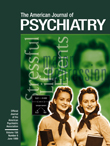His Bright Light: The Story of Nick Traina
Nurturance, compassion, and love reflect a mother’s intense feelings for her first-born son. Danielle Steel conveys each of these and much more in His Bright Light: The Story of Nick Traina. Ms. Steel portrays them with a very skilled writer’s eye for nuance, development, and tragedy. Her heart-wrenching effort to tell us how mental health professionals could have served Nick Traina better is extremely courageous and completely open. We need to listen ever so carefully to Nick’s story.
Nick was an exceptionally bright child with much love for his family. He could be stern, funny, and insightful, sometimes all at once. As he matured, his world expanded and his interests developed. He became a talented writer, composer, and singer. His peer group assumed great importance. Girls entered his life. Nick started to experience problems in school. His emotions were much more erratic. He became very self-analytical. He entered the world of mental illness, one of 3.5 to 4.5 million teenagers who are seriously emotionally disturbed.
As Nick’s behavior became more extreme—bouts of depression punctuated by periods of high emotion—his mother and his family became gravely concerned for his well-being. Family confidants were consulted; his mother took Nick to specialists. He went to a residential program. Much money was spent. Nothing seemed to work.
The family was desperate for a treatment or drug that would help Nick: “It was a time of terrifying frustration. I am a capable competent person, with ample funds at my disposal. If I couldn’t make things happen for Nick, I shudder to think at what happens to people who are too shy or too frightened to speak up, people who don’t know their way around” (p. 126).
Different diagnoses were offered; a depression drug was prescribed. Nick’s symptoms were mitigated only slightly. A new crisis occurred; Nick was placed into hospital inpatient care, first with other teenagers, then with other adults. He went to live with another family for two years. Specialists were consulted.
Nick’s medication was switched to lithium after he was given a new diagnosis of manic depression with attention deficit disorder. His life seemed to be miraculously changed; Nick took lithium regularly for 2 years. He became an accomplished singer. There were occasional inpatient stays.
Nick’s independence led him to refuse to take his medication. Using a combination of drugs, including heroin, he attempted suicide once, twice, then three times. Legal intervention was used to make sure he received care. Nick’s rock band went on tour. His fourth suicide attempt was successful, his final tragedy.
We can, should, must do better. We must improve training of all mental health professionals; we must improve our capacity to recognize, diagnose, and treat much earlier. We must listen ever so much more closely to family members and consumers when they seek our help. Managed care can distract us, but Nick Traina is the real reason for psychiatry and the other mental health professions.
This exceptional book is required reading. Danielle Steel has an awful lot to teach us. We have to learn well and act expeditiously to prevent future tragedies.



